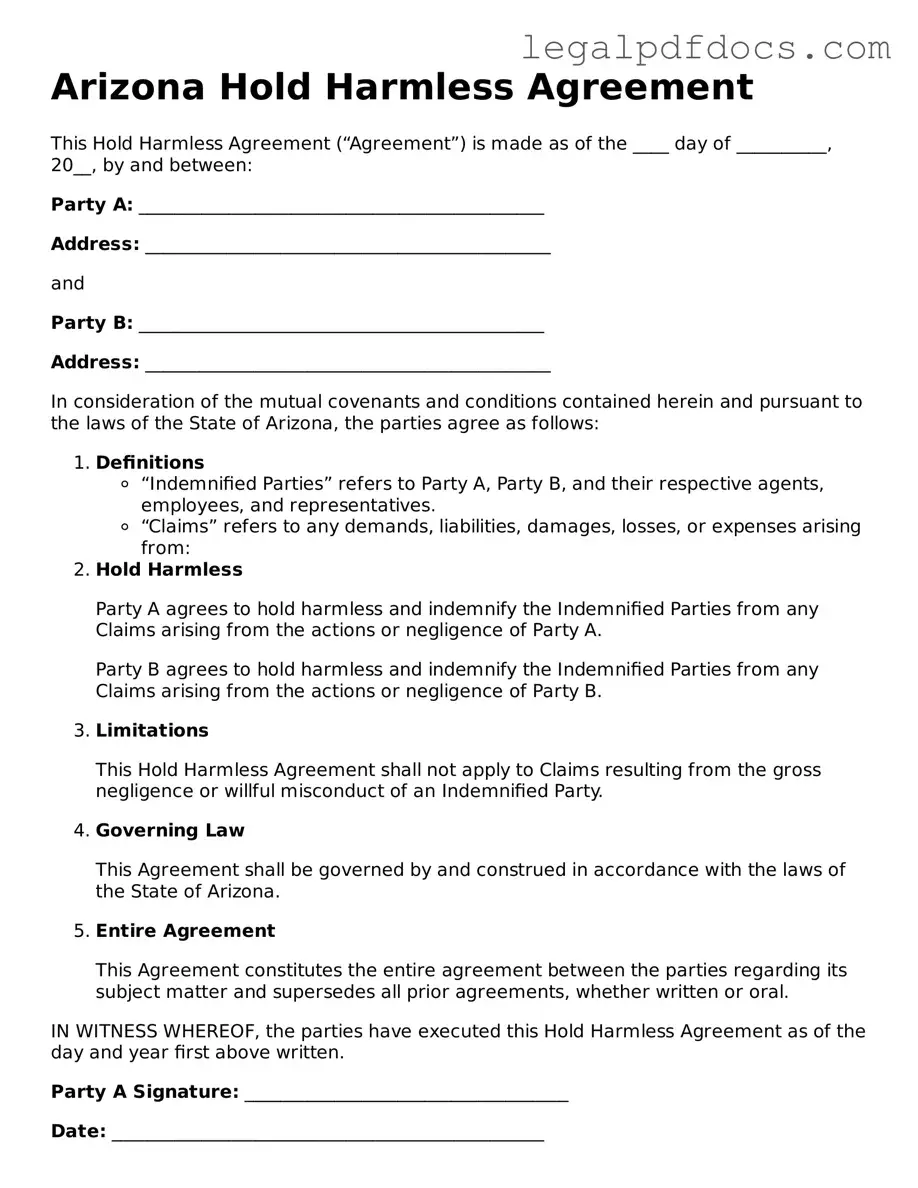Official Hold Harmless Agreement Form for Arizona
The Arizona Hold Harmless Agreement is a legal document designed to protect one party from liability for certain actions or events. This agreement is often used in various contexts, such as property rentals or event planning, to ensure that one party agrees not to hold the other responsible for damages or injuries. Understanding this form is essential for anyone engaging in agreements that involve risk management.
To fill out the form, click the button below.
Open Hold Harmless Agreement Editor Here
